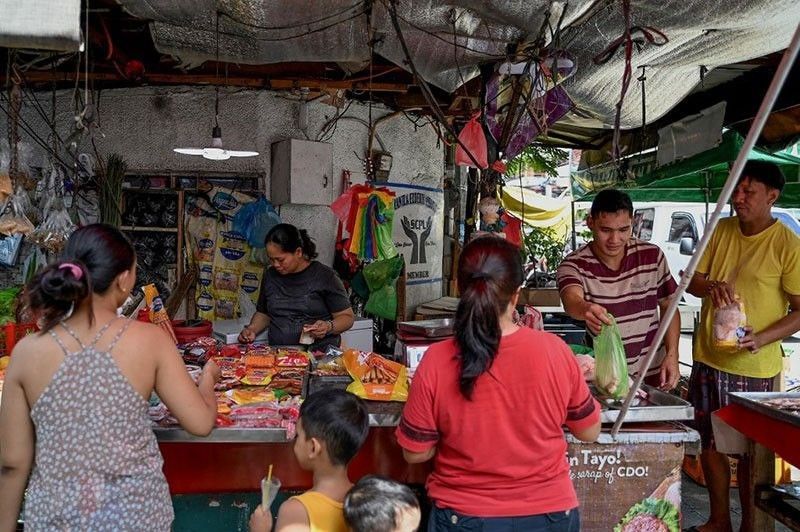
(Photo by Jam Sta. Rosa, AFP)
MANILA, Philippines — For the first time in three months, inflation eased in October mainly on slower increase in food prices, according to the Philippine Statistics Authority (PSA).
National Statistician Dennis Mapa said at a briefing yesterday that headline inflation rate, or the rate of increase in average prices of goods and services typically bought by consumers, settled at 4.9 percent in October from 6.1 percent in September.
The October inflation reading was also lower than the 7.7 percent in the same month last year.
The latest inflation result was below the 5.1 to 5.9 percent forecast of the Bangko Sentral ng Pilipinas (BSP) for October.
In the January to October period, inflation averaged 6.4 percent, still above the BSP’s two to four percent target range.
Driving the downtrend in the headline or overall inflation rate was the heavily weighted food and non-alcoholic beverages, which registered an inflation rate of seven percent in October from 9.7 percent the previous month.
Inflation for food alone slowed down to 7.1 percent in October from 10 percent in September. Rice inflation slowed to 13.2 percent in October from 17.9 percent in September.
“Rice inflation slowed down following the onset of peak harvest and import arrivals. The stable supply of vegetables as harvest season comes likewise resulted in a slower inflation rate of the commodity,” National Economic and Development Authority (NEDA) Secretary Arsenio Balisacan said.
Last month, the government lifted the price caps on regular milled and well-milled rice, put in place in September to address rising prices of the staple.
Other food groups that registered lower inflation rates in October from September were vegetables (11.9 percent from 29.6 percent), fish (5.6 percent from 6.1 percent), bread and other cereals (7.4 percent from 8.1 percent), sugar (4.9 percent from nine percent) and meat (0.8 percent from 1.3 percent).
Mapa said the slower inflation rate in October may have been due to base effect, as inflation was on an uptrend last year.
Core inflation, which strips off selected food and energy items, decelerated further to 5.3 percent in October from the previous month’s 5.9 percent.
In the last two months of the year, Mapa said the inflation rate is likely to continue to ease.
“If we don’t see any shocks, supply shocks, our view is that the inflation rate will go down,” he said.
Further dip seen
Rizal Commercial Banking Corp. chief economist Michael Ricafort said headline inflation could ease to a little over four percent from November to December this year, and could slow further to below BSP’s two to four percent target by January next year, provided there would be no escalation in geopolitical risks, particularly the Israel-Hamas war that could impact world oil prices.
Furthermore, storm damage could affect food supply and push up food prices.
“Thus, easing inflation trend, stronger peso exchange rate vs. the US dollar in more than three months and new three-week lows for global crude oil prices would support a pause in local policy rates, or at least reduce the urgency for any additional local policy rate hikes, especially if the Israel-Hamas war does not spread or widen or escalate in the Middle East,” he said.
Balisacan told reporters on the sidelines of the Philippine Economic Society’s 61st annual meeting yesterday the country may probably see the inflation rate return to the two to four percent target by early next year.
“Next month is of course a bit challenging because demand is high usually during Christmas season. But the monitoring group, particularly our inflation and market outlook group, is monitoring closely the developments in the markets,” he said.
Amid global challenges such as geopolitical uncertainties and the El Niño weather phenomenon, he said it is important to continue monitoring the prices of commodities, particularly food, transportation and energy.
 Philippine Economic Society (PES)
Philippine Economic Society (PES)